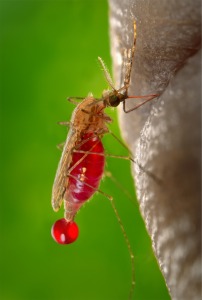By Professor Kathryn Maitland, Professor of Tropical Paediatric Infectious Diseases, Director of Centre for African Research and Engagement, Imperial College London
 Approximately 1200 African children are estimated to die from malaria every day, accounting for the vast majority of the global deaths from this disease. Over the past decade there has been an unprecedented increase in funding for malaria-control activities and vaccine development – the two major tools in ‘Roll back Malaria’ prevention and elimination programme. This has resulted in major scaling-up in the distribution of bed nets treated with long-lasting insecticides and public-private funding for late phase multi-site trials of the most promising anti-malaria vaccine candidate developed to date (RTS,S).
Approximately 1200 African children are estimated to die from malaria every day, accounting for the vast majority of the global deaths from this disease. Over the past decade there has been an unprecedented increase in funding for malaria-control activities and vaccine development – the two major tools in ‘Roll back Malaria’ prevention and elimination programme. This has resulted in major scaling-up in the distribution of bed nets treated with long-lasting insecticides and public-private funding for late phase multi-site trials of the most promising anti-malaria vaccine candidate developed to date (RTS,S).
Nevertheless, early optimism may prove to be premature. The emergence and spread in many parts of Africa of mosquito resistance to all classes of insecticides threatens the effectiveness of these control measures with currently no readily available alternatives to the pyrethroids. The report of early protection against malaria shown in the clinical trial of the RTSS malaria vaccine which was hoped to translate into long-term reductions in the burden of severe and fatal malaria, has been frustrated by the most recent report of long-term follow-up data (to 48 months) which has revealed waning vaccine efficacy and an increased risk of severe malaria beginning 20-months post-vaccination.
Finally, one further strategy to avert childhood deaths from malaria has been the widespread introduction of and improved access to effective artemisinin-combination treatments. Nevertheless, the emergence of artemisinin resistance in Southeast Asia, from the Thailand-Cambodia border, is a major global concern. The historical increase in resistance to the former first-line antimalarial treatments chloroquine and sulfadoxine–pyrimethamine previously chronicled, originated too in western Cambodia, which eventually spread across Asia into Africa, resulting in the deaths of millions of children. Presently, there are also no current fall-back drugs in the pipeline for malaria treatment should artemisinin-combination treatments start to fail in Africa.
The measures introduced to prevent, control and ensure access to early treatment has seen this disease retreat from large parts of the globe. Nevertheless, malaria remains stubbornly unyielding in sub-Saharan Africa and parts of Asia. Today, 57% of Africans continue to live in areas with moderate-to-high rates of malaria transmission, with 10 countries accounting for 87% of people exposed to the highest-intensity malaria transmission in the world. Reminding us that it is too soon to be complacent about the achievements to date in malaria control.